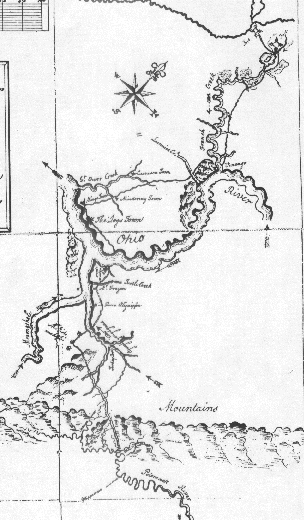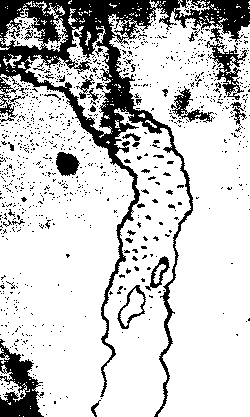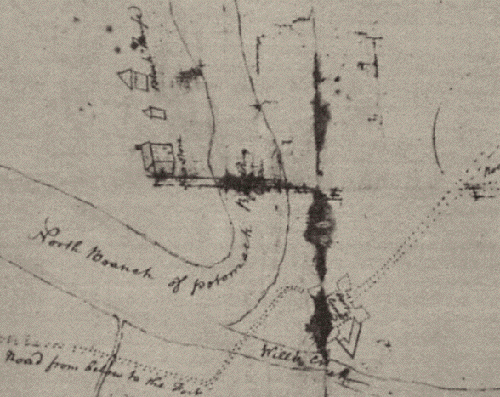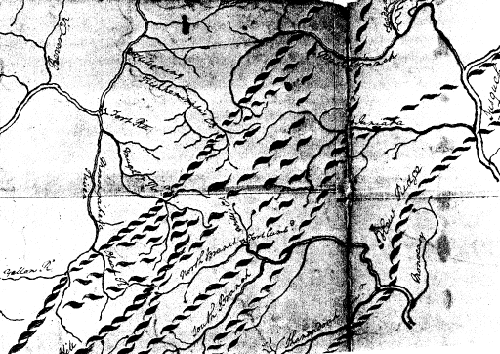George Washington's Maps of the Upper Potomac
|
Portion
of George Washington's Map of the Ohio Country,
|
|
|
George
Washington's sketch of the rapids |
|
|
Washington's notes accompanying his 1754 map:
|
|
|
George
Washington's sketch of the site of
|
|
|
Detail
of the "Walker-Washington" map. George Washington probably made this copy in Decembe, 1769 from a map presented to the Virginia House of Burgesses by Dr. Thomas Walker. The main purpose of Walker's map was to establish the boundary line between the Virginia settlements and the western lands belonging to the Cherokees, relative to the Treaty of Hard Labor (concluded with the Cherokees in Hard Labor, North Carolina on October 14, 1768). This line ran through the southwestern portion of Virginia. The map also shows the Appalachian range in vicinity of the Potomac, territory that was of great interest to Washington, who would be making a trip across those mountains in October 1770 to determine the extent of the lands that had been promised by Virginia's Governor Dinwiddie to veterans of Washington's 1754 campaign to the Forks of the Ohio that touched off the French and Indian Wars. This map is in Washington's hand, but has a notation: "Aligany/Copied from a Map of/Doct.r Walkers/laid before the Assembly." Walker's map has not been found, so we cannot tell for certain what elements were added by Washington. However, one scholar suggests that the distinctive spelling of certain place-names indicates that Washington may have added some features from Lewis Evans' 1755 map of the region. |
|
|
Copies of maps from Library of Congress Geography and Maps Division (map of the Ohio Country and Fort Cumberland sketch) and National Archives (falls below Harpers Ferry); also included in the Atlas of George Washington. Sources:
|




